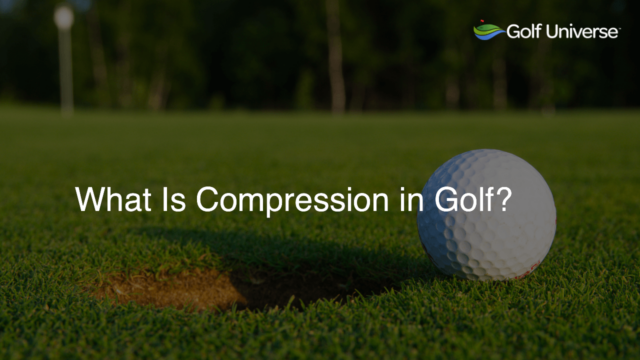In golf, the term “chicken wing” refers to a common swing flaw where a golfer’s lead elbow (the left elbow for right-handed players) bends outward during the swing, resembling a chicken wing. This causes a lack of extension, often leading to mis-hits, loss of power, and reduced accuracy.
Understanding the Chicken Wing in Golf
The “chicken wing” in golf refers to a common swing fault where the golfer’s lead elbow juts out away from their body, resembling a chicken wing. This motion disrupts the golfer’s swing mechanics, causing a lack of extension and creating a variety of problems on the golf course, including mis-hits, loss of power, and reduced accuracy.
Causes of the Chicken Wing Swing Fault
The main causes of the chicken wing swing fault may include:
- Improper grip, which can lead to compensatory body movements.
- Inadequate body rotation, causing excessive reliance on the arms and wrists.
- Weak swing technique, such as incorrect takeaway or downswing mechanics.
- Tension in the muscles, preventing fluid movement through the swing.
Effects of the Chicken Wing Swing Fault
When the chicken wing occurs, it generates several negative consequences that can impact a golfer’s performance:
- Loss of power: A bent lead elbow shortens the swing arc, reducing clubhead speed, and diminishing distance off the tee or from the fairway.
- Loss of accuracy: The improper contact with the ball can lead to mis-hits, resulting in errant shots that miss fairways and greens.
- Inconsistency: The chicken wing creates inconsistency in swing plane and clubhead delivery, making it difficult for golfers to develop a reliable and repeatable swing.
Fixing the Chicken Wing Swing Fault
Addressing the chicken wing swing fault can be achieved by following some key steps:
- Proper Grip: Maintain a neutral grip on the golf club, allowing for fluid movement and improved swing mechanics.
- Body Rotation: Focus on proper body rotation throughout the swing, engaging the larger muscles of the torso to generate power and stabilize the swing.
- Swing Technique: Work on takeaway and downswing motion, ensuring the arms and wrists are well synchronized with the rest of the body.
- Relaxation: Keep muscles relaxed and maintain a smooth tempo during the swing, avoiding excess tension that may contribute to the chicken wing.
Why Correcting the Chicken Wing is Crucial
Addressing the chicken wing swing fault is essential as it not only improves the golfer’s ability to hit the ball accurately but also elevates their overall performance on the course. Here at Golf Universe, we believe in helping golfers achieve their full potential by providing the necessary tools and information they need to correct common swing flaws like the chicken wing.
The Role of Equipment in Fixing the Chicken Wing
Choosing the right equipment can also significantly contribute to addressing swing faults. At Golf Universe, we understand that having a properly fitted golf club enhances the golfer’s ability to execute a correct swing. Experienced golfers and starters alike should consider club fitting to ensure their gear is optimized for their swing needs, helping them to get rid of the chicken wing problem.
Learning from the Pros
While analyzing and learning from professional golfers can aid in correcting swing faults, it’s essential to remember that everyone’s swing is unique. Our blog recommends paying attention to key elements, such as grip, posture, and alignment, demonstrated by the pros and adapt them according to your playing style and capabilities. This way, you can develop an efficient swing that minimizes the occurrence of chicken wings.
Practice Drills and Training Aids
At Golf Universe, we know that practice is the key to success when it comes to fixing the chicken wing or any other swing fault. Spend time working on relevant drills, which can be found on our blog, to reinforce the proper swing mechanics and muscle memory. In addition, using some training aids, like elbow braces or swing trainers, can also be useful in fixing the chicken wing, allowing golfers to achieve optimal consistency and performance on the course.
FAQ Section: Chicken Wing in Golf
If you’ve read our blog post about the chicken wing in golf and have more questions, don’t worry! We’ve compiled a list of common questions and NLP-style answers to further help you understand, prevent, and conquer the chicken wing swing fault.
What are the main causes of the chicken wing in golf?
The main causes are improper grip, inadequate body rotation, weak swing technique, and tension in the muscles. Each of these issues can contribute to the chicken wing, leading to decreased golf performance.
How does the chicken wing affect golf performance?
The chicken wing swing fault reduces power, accuracy, and consistency in golf shots by shortening the swing arc and disrupting the proper contact with the ball. This leads to mis-hits, loss of distance, and errant shots.
What steps should I take to fix the chicken wing?
To fix the chicken wing, focus on proper grip, body rotation, swing technique, and relaxation. These steps help to synchronize your body movements and develop a fluid, powerful swing that minimizes chicken wing occurrences.
Can the right equipment help with fixing the chicken wing?
Yes, having the right equipment, especially a properly fitted golf club, can contribute to addressing the chicken wing swing fault. Properly fitted clubs help optimize your swing and reduce the chances of developing a chicken wing.
Are there any practice drills or training aids to fix the chicken wing?
Yes, several practice drills and training aids, like elbow braces and swing trainers, can help correct the chicken wing. These drills and aids reinforce proper swing mechanics and muscle memory, ultimately leading to improved golf performance.











